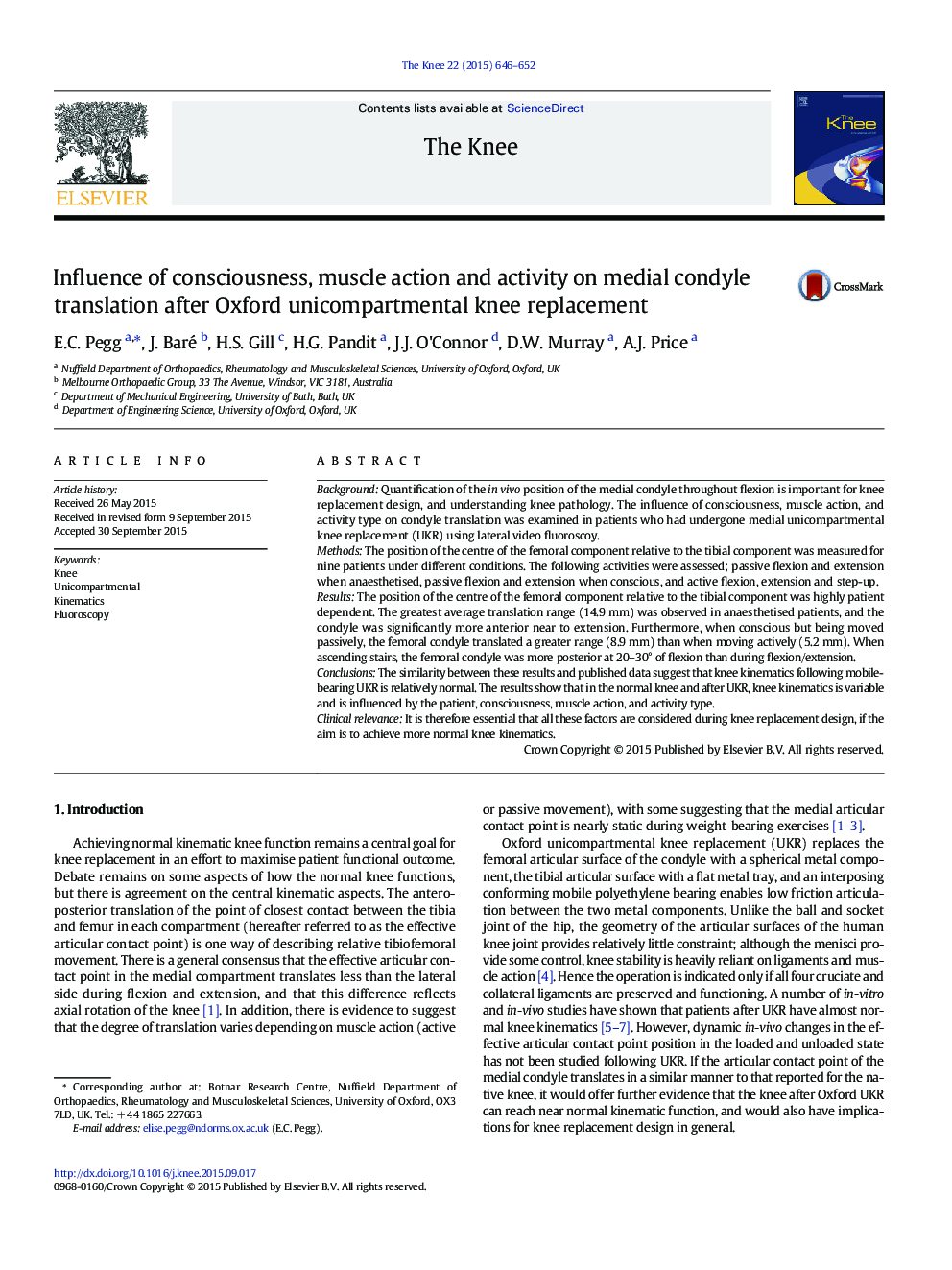| کد مقاله | کد نشریه | سال انتشار | مقاله انگلیسی | نسخه تمام متن |
|---|---|---|---|---|
| 4077378 | 1267214 | 2015 | 7 صفحه PDF | دانلود رایگان |

• The anterior–posterior translation of the femoral component was highly patient dependent.
• Anaesthetised patients had the greatest anterior–posterior translation range.
• Passive knee flexion had greater translation than active flexion.
• Femoral component translation was minimal during stair-climbing.
• Patient consciousness, muscle action and activity all influence medial condyle translation.
BackgroundQuantification of the in vivo position of the medial condyle throughout flexion is important for knee replacement design, and understanding knee pathology. The influence of consciousness, muscle action, and activity type on condyle translation was examined in patients who had undergone medial unicompartmental knee replacement (UKR) using lateral video fluoroscoy.MethodsThe position of the centre of the femoral component relative to the tibial component was measured for nine patients under different conditions. The following activities were assessed; passive flexion and extension when anaesthetised, passive flexion and extension when conscious, and active flexion, extension and step-up.ResultsThe position of the centre of the femoral component relative to the tibial component was highly patient dependent. The greatest average translation range (14.9 mm) was observed in anaesthetised patients, and the condyle was significantly more anterior near to extension. Furthermore, when conscious but being moved passively, the femoral condyle translated a greater range (8.9 mm) than when moving actively (5.2 mm). When ascending stairs, the femoral condyle was more posterior at 20–30° of flexion than during flexion/extension.ConclusionsThe similarity between these results and published data suggest that knee kinematics following mobile-bearing UKR is relatively normal. The results show that in the normal knee and after UKR, knee kinematics is variable and is influenced by the patient, consciousness, muscle action, and activity type.Clinical relevanceIt is therefore essential that all these factors are considered during knee replacement design, if the aim is to achieve more normal knee kinematics.
Journal: The Knee - Volume 22, Issue 6, December 2015, Pages 646–652